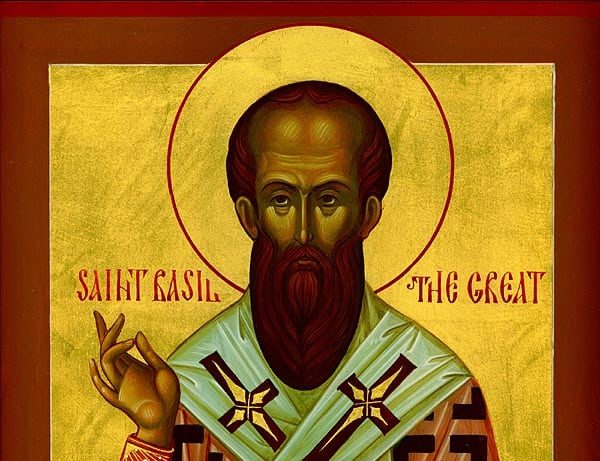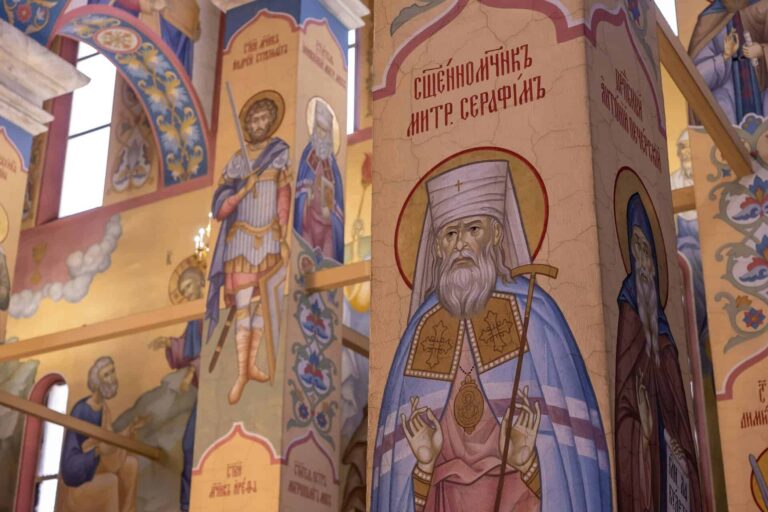Saint John Climacus: The 6th Century Monk Many Know As The Saint John of the Ladder
Saint John Climacus was born about 579, and he died in March of 649. He was also known as John of the Ladder, with the ladder being how to raise one’s soul to God. Saint John Climacus was a Christian monk at the monastery on Mount Sinai. He lived some of his life in Gaza. However, when he was sixteen years old, he moved to a monastery at the base of Mount Siani. He studied at the monastery and became very knowledgeable in many subjects. Near the end of his life, Saint John Climacus was encouraged to share his knowledge with others and wrote the “Climax,” also known as “The Ladder of Paradise.” This work was a collection of sayings and examples to illustrate how to live the monastic life. Did you know that from this work, he received the name Climacus, a derivative of the Latin root for “climax” or “ladder”?
Saint John Climacus Biography
Many details of the life of Saint John Climacus are unknown. There exists an ancient account of St. John’s life, known as the vita (life) of the saint, written by a monk named Daniel who was in the same monastery. This vita is the principal source for information about John’s life. Daniel, though claiming to be a contemporary, admits to no knowledge of John’s origins, and any detail on John’s birth is the result of much later speculation and is confined to references in the Menologion. So, we know next to nothing about Saint John’s early life.
Daniel, in his vita, does not provide any chronology, and his knowledge of the life of Saint John Climacus is vague. John came to the Vatos Monastery at the foot of Mount Sinai, now Saint Catherine’s Monastery, and became a novice when he was sixteen years old. He leaned at the foot of a more senior monk, Martyrius. After Martyrius died, John, wishing to practice greater asceticism, withdrew to a hermitage at the foot of the mountain, where he lived in isolation for twenty years, studying the lives of the saints.
Saint John Climacus lived by the sea, in Gaza, and practiced Law there. These findings also explain the horizon and the literary quality of his writings, which have a clear philosophical background. Many saints, including him, entered the spiritual life at age sixteen. When he was about 65 years old, the monks of Sinai persuaded him to become their hegumen, sort of like an abbot.
On the literary output of Saint John Climacus, we know only about The Ladder of Divine Ascent. This work was written in the early 7th century at the request of John, Abbot of Raithu, a monastery situated on the shores of the Red Sea. Also surviving to the present day is a shorter work, To the Pastor, most likely an appendix to the Ladder. It is in this book that we hear of the ascetic practice of carrying a small notebook to record the monk’s thoughts during contemplation.
The Ladder describes how to raise one’s soul and body to God through the acquisition of ascetic virtues. Saint John Climacus uses an analogy of Jacob’s Ladder as the framework for his spiritual teaching. Each chapter in the Ladder is referred to as a “step,” and deals with a separate spiritual subject. There are thirty Steps of the ladder, which correspond to the age of Jesus at his baptism and the beginning of his earthly ministry.
Within the general framework of a ‘ladder,’ Saint John Climacus’s book is divided into three sections. The first seven Steps of the ladder deal with general virtues necessary for the ascetic life, while the next nineteen instruct in overcoming vices and building their corresponding virtues. The final four Steps concern the higher virtues toward which the ascetic life aims. The final rung of the ladder is love.
Saint John Climacus Veneration
The Ladder of Divine Ascent shows a ladder extending from earth to heaven in a painting. Several monks are pictured climbing a ladder; at the top is Jesus, prepared to receive them into Heaven. Also shown are various angels helping those climbing the ladder. There are also demons attempting to drag down the climbers or shoot them with arrows; at least one monk is falling. This is veneration because right there in the lower right corner, Saint John Climacus himself.
Saint John Climacus’ feast day is March 30 worldwide. The Eastern churches also commemorate him on the Fourth Sunday of Lent. Many churches are dedicated to him in Russia, including a church and bell tower in the Moscow Kremlin. Climacus was also known as “Scholasticus” during his lifetime, but he is not to be confused with John Scholasticus, Patriarch of Constantinople.
Several translations into English have been made of Saint John Climacus’ Vita, which is how we know him, including one by Holy Transfiguration Monastery (Boston, 1978). The Vita contains the Life of St. John by Daniel (another monk in his monastery). It contains a description of the Ladder of Divine Ascent, and To the Pastor, and usefully provides footnotes explaining many of the concepts and terminology used from an Orthodox perspective, as well as a General Index.
Conclusion
Saint John Climacus lived long ago, and we know little of his early life. There was an account of his life written by a fellow monk named Daniel. From that Vita, and from the 30-step Ladder of Divine Ascent. The ladder depicts how to get to heaven and gives some advice that can prove useful today, though it was written 1,700 years ago.





